Munich has a gruesome history buried deeper in the past than the well-recorded traumatic decades of the mid-twentieth century. Here are five places to experience a very different Bavarian capital.
The Plague Bells Ring
Like almost every large European city, the plagues of disease have ravaged Munich. The Black Death of 1348-50 devastated the city, and other epidemics, precipitated mainly by conflict or climatic changes, left their mark.
The worst came on the heels of the Thirty Years War. Over the winter of 1635, an inconceivable 15,000 of the city’s 20,000 residents are said to have succumbed to the bubonic plague – folklore holds it was brought by Swedish troops coming and going from the city.
Each day, around midday, the bells of ‘Alter Peter’, or St Peter’s—the city’s oldest surviving church—rang to announce the deaths of those who had succumbed. Sometimes, these peals lasted for a long, long time.
It’s important to remember that Sankt Peter was surrounded by a churchyard thronged with tombstones at this time. Locals could not help but be aware of the incredible number of those they had lost.
Another memorial to the dead would come in the form of the Mariensäule (Mary Column), erected in the Marienplatz by Elector Maximilian I in 1637, as thanksgiving for the city’s (barely) surviving the Swedish occupation since 1632 and the resulting plague.
Church of St Peter / Sankt Peter ‘Alter Peter’ – Petersplatz 1, 80331
Mary Column / Mariensäule – Marienplatz 22, 80331
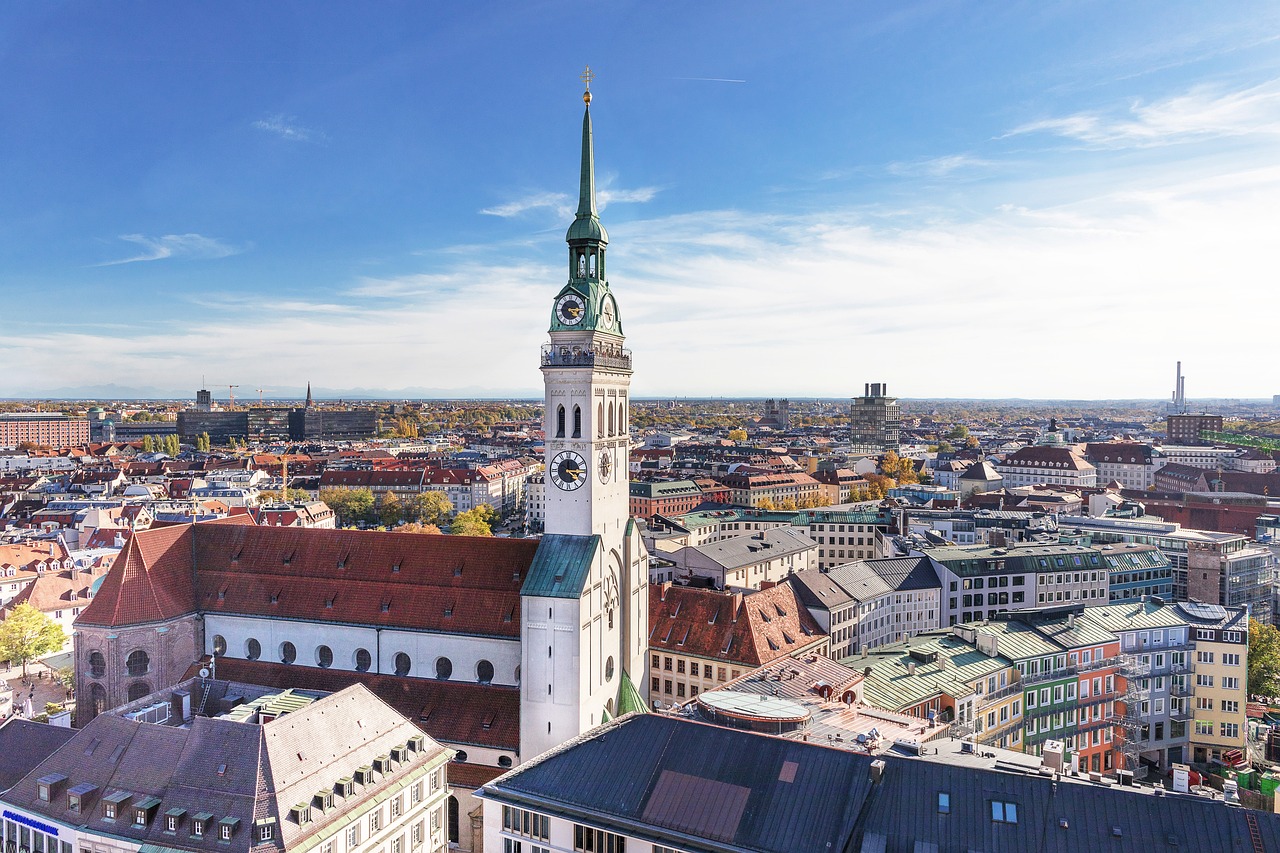
The Last ‘Witch’
The witch hysteria that consumed much of the German-speaking countries did not spare Munich – between the 1590s and 1701, a large number of people, primarily women, were executed for witchcraft, led from the prison in the former Falkenturm to their execution.
While shrouded in myth and legend, the tale of the last ‘witch’ murdered by the authorities in Munich does tell us something about what drove these periods of violent hysteria.
Maria Theresia Kaiser was supposedly only 17 when she was executed on September 17th, 1701, and her body burned. This took place near today’s Hackerbrucke bus station. Supposedly, she had cursed a court clerk that she worked for – in reality, she likely rejected his sexual advances.
Under torture, Maria confessed to consorting with the devil and several high-profile individuals in nocturnal gatherings and was subsequently sentenced to death.
According to folklore, the night before her execution, a large bat was seen flying from the tower and in the morning, she was found unconscious and naked in her cell. Meanwhile her accuser was found strangled in his lodgings, the prison shirt given to her around his neck.
Who knows the reality of the tale – but it would be nice to believe there was at least some kind of justice done.
Former execution site / Hackerbrucke – Arnulfstraße 21, 80335
Site of the Falcon Tower / Falkenturm – Maximiliansstraße 6-8, 80335
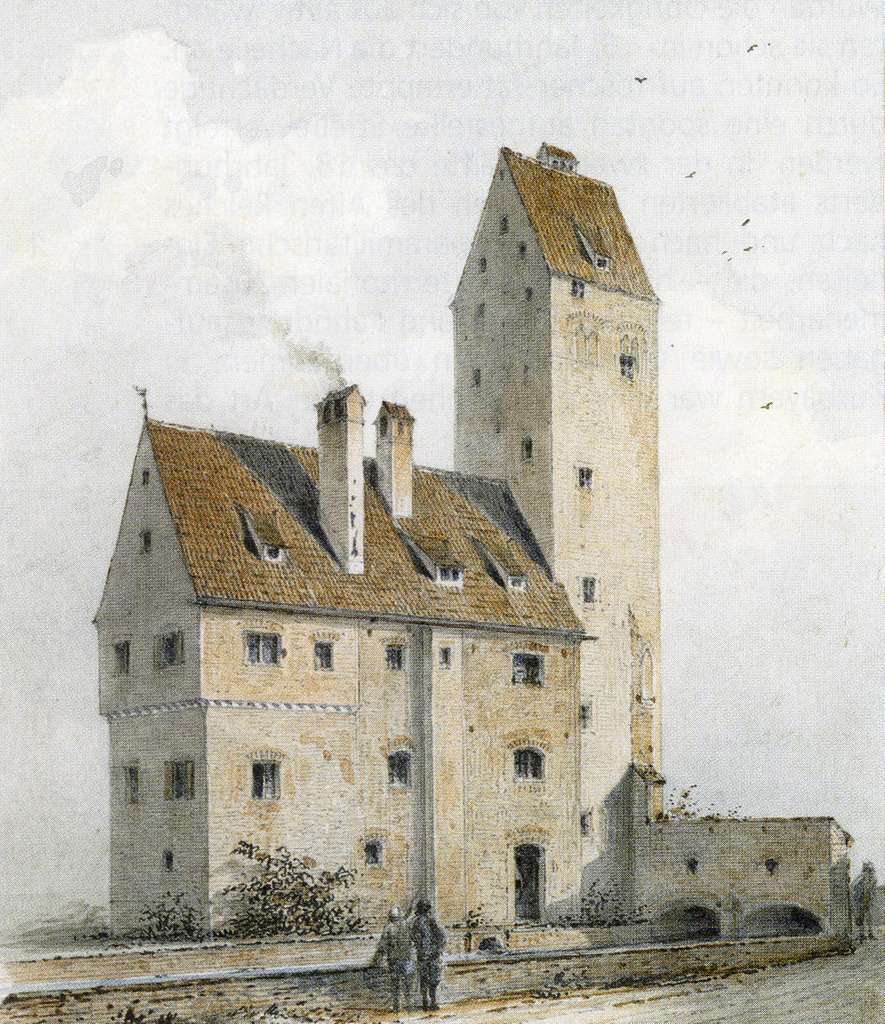
The Christmas Massacre
Munich was no stranger to war before the devastation of the Nazi era. Thanks to its location on the Isar and proximity to Austria, it has been threatened during the clash of rival powers.
Sendling, now Munich’s sixth district, was the scene of a particularly brutal incident in the region’s history on Christmas night in 1705.
Locals, in opposition to forced recruitment and other privations during the Europe-wide War of the Spanish Succession, had risen against both the Bavarian Electress, Kunigunde, and the Holy Roman Emperor, Joseph I.
Marching on Munich, they had been turned back by overwhelming numbers of Imperial troops and retreated to the town of Sendling, where they thought the church might offer sanctuary on a holy day.
This was not to be the case—after surrendering, many of the insurgents were executed on the spot, and the Emperor’s forces destroyed the entire town. It is believed over a thousand men, women and children were killed.
According to local folklore, the ‘Smith of Kochel’, a legendary blacksmith and former war hero who had led the rebels, was the last to fall.
Today, the slaughter of the insurgents – and many more innocents – is commemorated in a memorial at the Alter Südfriedhof (Old Southern Cemetery) and a memorial to the ‘Smith of Kochel’ on Lindwurmstrasse.
Old Southern Cemetery / Alter Südfriedhof – Thalkirchnerstraße 17, 80337 München
Smith of Kochel Memorial / Schmied-Von-Kochel-Denkmal – Lindwurmstraße, 80337 München

Heartbreak at the Frauenkirche
When Johann Wolfgang von Goethe’s novel ‘The Sorrows of Young Werther’ was published in 1774, few would realise the profound impact it would have on a generation on the brink of the Romantic era. The tale of a young man taking his life after his courtship was rejected resonated deeply with many.
One such young woman was Fanny von Ickstatt, the daughter of a minor noble family. When her mother forbade her from marrying Franz von Vincenti, a dashing young military officer she met at a ball, Fanny was not just upset but truly distraught.
On January 14th, 1785, under the pretext of wishing to take in the views, Fanny climbed the north tower of the city’s Frauenkirche and, with a farewell to her chaperone, threw herself off.
Despite attempts to suppress the news, Fanny’s suicide rocked the city – it was all that was talked about for months, and many sources claim that ‘The Sorrows of Young Werther’ was found on her bedside table. Her story was later published as a novel, along with some plays and poems that she had written – themselves enjoying success.
Goethe, for his part, knew about Fanny’s fate. A letter from the following year records, “I climbed the tower from which the young lady threw herself down.”
Fraenkirche – Frauenplatz 1, 80331 München
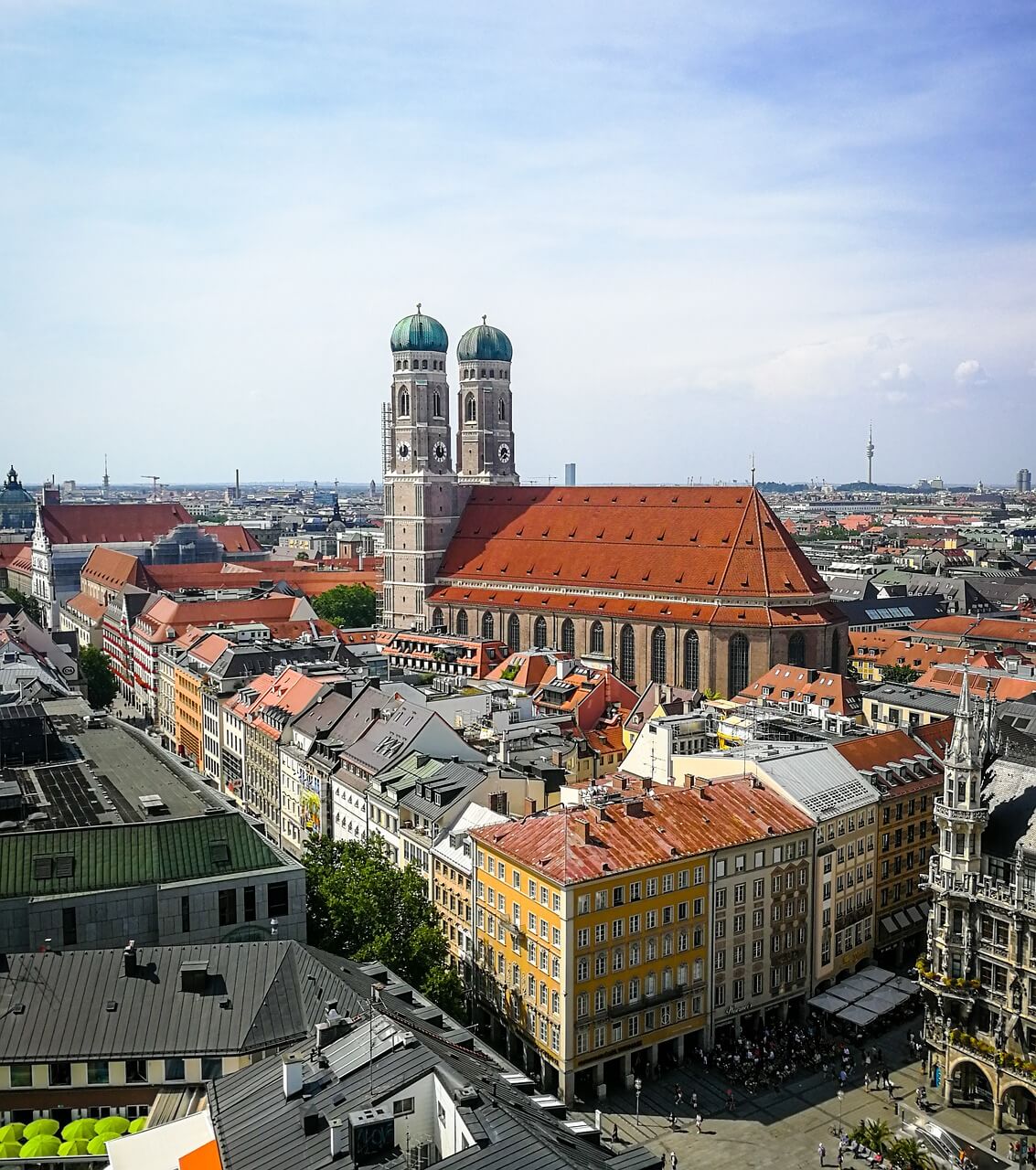
The ‘Eskimo’ Tragedy
It was to be a carefree evening of fun and foolishness amid Munich’s carnival season. It turned into a night of horror remembered to the present day.
On February 18th, 1881, young people from across the city gathered at Kil’s Colosseum, near today’s Hans-Sachs-Strasse. The large, popular dance hall and brewery were packed with various clubs and societies celebrating, with the theme ‘a pub tour around the world’.
A group of sculpture students from the Academy of Fine Arts had chosen Antarctica as their chosen region and had dressed up (rather anachronistically) as bears and ‘Eskimos’.
Unfortunately, one of the students, Adolf Görke, danced too close to a candle sometime around midnight. His costume, almost entirely constructed from flammable materials, burst into flame. Flailing, he reached for his comrades – soon, they were engulfed, too.
Thanks to copious amounts of beer and alcohol used to extinguish the flames and firefighters in attendance, the fire was put out quickly. However, 12 people were burned and nine succumbed to their injuries. The survivors were marked for life.
While the tragedy was primarily missed by fellow partygoers – the Colosseum was a big place – the next morning, the city was shocked and saddened. Thousands would witness a funeral procession a few days later as the dead were led to the Alter Südfriedhof, and a memorial was erected to the nine victims in section 20-8-14.
The death of the nine students would not be in vain, however. The incident resulted in several important fire safety regulations being introduced that would undoubtedly save many lives in the years to come.
Old Southern Cemetery / Alter Südfriedhof – Thalkirchnerstraße 17, 80337
ein interessantes Grab bei einer Faschingsfeier verbrannten alle als Eskimos verkleidete Künstler – Eskimo Tragödie pic.twitter.com/dAdM839Egw
— Uwe Steiner (@UweSteiner) September 7, 2022

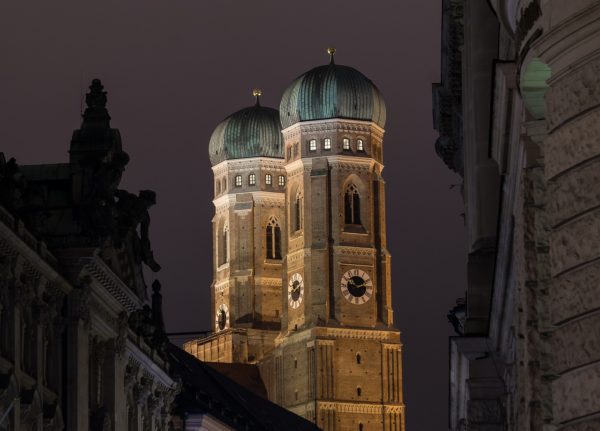

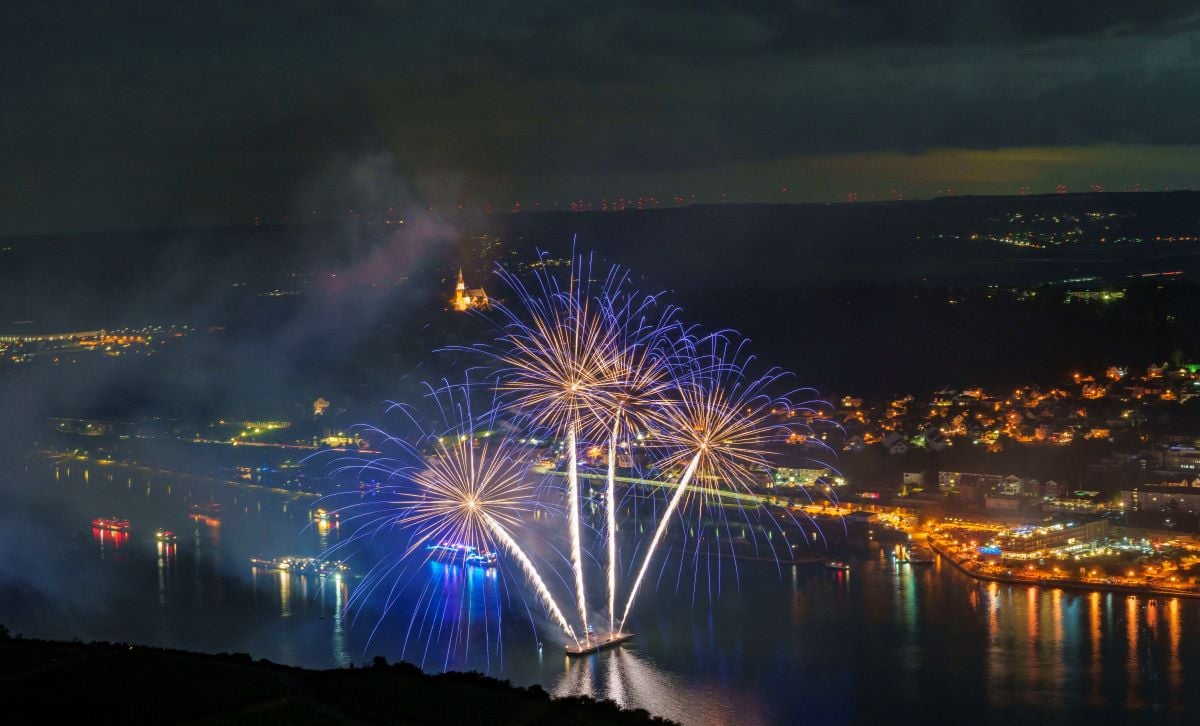

 Please whitelist us to continue reading.
Please whitelist us to continue reading.
Member comments